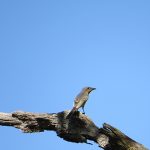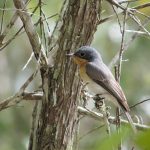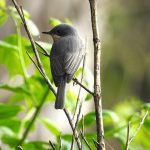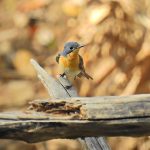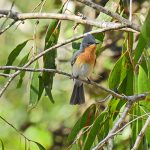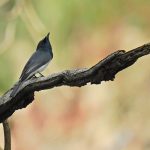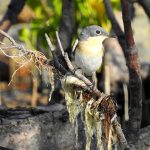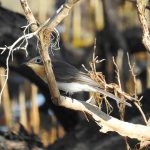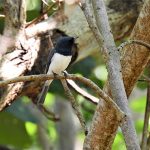LEADEN FLYCATCHER
The Leaden Flycatcher is a relatively small bird, measuring about 12 to 13 cm in length. It has a distinctive appearance with a leaden grey or bluish-grey plumage on the upperparts, hence its common name. The underparts are pale grey, and the throat is white, the bill is black, and the legs are grey.
The Leaden Flycatcher is native to Australia and is found throughout the mainland and in some parts of Tasmania. Its range extends from coastal areas to inland regions, including open forests, woodlands, and scrublands.
These flycatchers prefer habitats with a mix of trees and shrubs, including eucalypt forests, rainforests, and even urban gardens. They can be found at various altitudes, from sea level to mountainous regions.
Leaden Flycatchers are generally solitary birds and are known for their aerial foraging behavior. They perch on exposed branches or tree trunks and dart out to catch flying insects mid-air. They are agile fliers and have quick, acrobatic movements.
Their diet mainly consists of insects, such as flies, beetles, and moths. They rely on their excellent aerial hunting skills to catch their prey.
Leaden Flycatchers typically breed between August and January. They construct cup-shaped nests made of grass, bark, and other plant materials, which are often placed on horizontal branches or in tree hollows. The female usually incubates the eggs, while both parents share feeding responsibilities for the chicks.
The Leaden Flycatcher has a variety of vocalizations, including melodious songs and distinct calls. Their songs consist of a series of melodious and warbling notes, often repeated in quick succession.
Although specific population estimates are not available, the species has a widespread distribution and is not currently facing significant threats.

